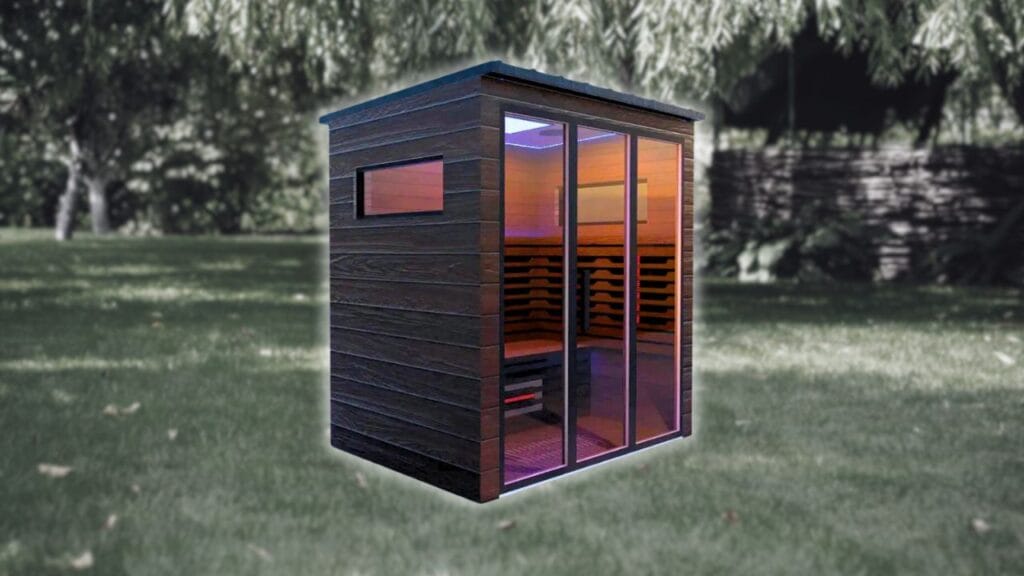What Is Rucking and Why You Should Go-Ruck?
We include links to products we think are useful for our readers. If you click and buy a product through one of the affiliate links on this page, we may earn a small commission.

In recent years, rucking has gained significant popularity as a unique and effective fitness trend. Whether you’re a fitness enthusiast looking for a new challenge or someone seeking a low-impact exercise option, rucking offers a range of benefits.
Rucking has roots in a combination of traditional hiking with a mix of military pack marching thrown in. Many people who ruck would say they do it just for fun, but more and more people are turning to rucking as a dedicated workout and as a way to build strength endurance and a strong ‘engine’.
In this article we will delve into all aspects of rucking, including what it is, the benefits it provides, the necessary gear, incorporating rucking into workouts, its role as zone 2 cardio, and frequently asked questions. By the end of this article, you’ll have a complete understanding of rucking and be ready to embark on your own rucking journey.

What is Rucking?
You might be thinking, “is rucking just another word for hiking?”. Well, it’s got some similarities, and the main movement pattern here is of course walking. But, I like to think of rucking as a concerted effort to make the hike more of a challenge, discomfort and workout.
Essentially, rucking is all about throwing on a weighted back pack and covering some miles/kilometres without complicating things too much. What makes rucking a challenge is the time-under-tension of having a weighted pack on your shoulders.
Michael Easter talk a lot of hype about rucking in his amazing book, The Comfort Crisis.
Rucking has roots in military style training and involves loading up a backpack with anything from weights to rocks to heavy gear and carrying it over all types of terrain. Rucking is quite a popular fitness trend in 2023, and there a whole heap of quality rucking essentials you probably want to consider before going on your first ruck, which we will talk to in this article.
Benefits of Rucking
Rucking offers a wide array of benefits that make it a popular fitness choice for individuals seeking a unique and effective workout. Personally, I have experienced the transformative power of rucking recently as I have incorporated more Zone 2 Training into my routine.
The combination of cardiovascular exercise and strength training makes it a versatile and efficient form of physical activity. Let’s explore the various benefits of rucking in detail.
Zone 2 Cardiovascular Training
Rucking provides an excellent way to engage in zone 2 cardiovascular training, which involves working out at a moderate intensity that elevates the heart rate without pushing it to its maximum. This moderate effort stimulates fat burning, improves endurance, and enhances overall cardiovascular health. During my rucking sessions, I have noticed the distinct benefits of zone 2 cardio, including increased stamina and improved aerobic capacity.
During zone 2 cardio, your heart rate is elevated to a level that’s challenging yet sustainable over an extended period. This sustained effort helps to strengthen your heart and lungs, leading to improvements in aerobic capacity and stamina. Over time, consistent zone 2 cardio training can enhance your body’s ability to efficiently use oxygen, allowing you to perform better during physical activities and recover more quickly between workouts.
Muscular Strength and Endurance
One of the remarkable benefits of rucking is its impact on muscular strength and endurance. By carrying a weighted backpack, I have experienced significant improvements in my lower body strength, particularly in my glutes, quads, and calves. The constant resistance provided by the additional weight engages these muscles and promotes their development. Additionally, rucking also activates the core and upper body muscles as they work to stabilize the body during the exercise. This comprehensive engagement of muscles leads to enhanced overall strength and endurance.
In my personal experience, I’ve observed significant gains in lower body strength, particularly in muscles such as the glutes, quads, and calves. The additional weight adds resistance to movements like walking and hiking, effectively engaging these muscle groups and promoting their development. As a result, I’ve noticed greater power and stability in my lower body, which has translated to improved performance in other activities and reduced risk of injury.
Moreover, rucking isn’t just a lower body workout—it also activates the core and upper body muscles as they work to stabilize the body and support the weight of the backpack. This comprehensive engagement of muscles contributes to overall strength development and helps build functional strength that translates to real-world activities.
Improved Posture and Body Mechanics
Rucking has had a profound impact on my posture and body mechanics. Carrying a weighted backpack forces me to maintain proper form and posture throughout the activity. The added load on my back and shoulders prompts me to engage my postural muscles, resulting in improved spinal alignment and overall posture. Over time, I have noticed that my everyday walking form has become more upright and aligned, which carries over into other activities as well.
Over time, the benefits of rucking have extended beyond my workouts and into my daily life. I’ve noticed that my walking form has become more upright and aligned, with a natural tendency to maintain proper posture even when I’m not carrying a backpack. This improvement in posture has had a positive impact on my body mechanics, reducing strain on my muscles and joints and enhancing my overall movement efficiency.
By consistently incorporating rucking into my fitness routine and paying attention to proper form and posture, I’ve been able to reap the long-term benefits of improved posture and body mechanics. Rucking has become not only a physical workout but also a valuable tool for promoting spinal health and postural alignment in my everyday life.
Enhanced Mental Well-being and Motivation
Engaging in rucking not only benefits the body but also has a positive impact on mental well-being. As I push myself during a challenging ruck, I experience a sense of accomplishment and mental resilience. Rucking serves as a reminder that I am capable of overcoming obstacles and achieving my goals. This newfound mental strength and motivation extend beyond my fitness pursuits and influence other areas of my life, helping me tackle challenges with confidence.
This newfound mental resilience and determination cultivated through rucking extend far beyond my fitness pursuits. When faced with obstacles or challenges in other areas of my life, I draw upon the mental strength I’ve developed during rucking sessions. Whether it’s tackling a difficult project at work or navigating personal challenges, I approach each situation with a sense of confidence and determination, knowing that I have the resilience to overcome any obstacle.
In essence, rucking has become not only a physical workout but also a powerful tool for building mental resilience, confidence, and determination. By embracing the challenges of rucking and pushing myself to new heights, I continue to unlock new levels of mental strength and fortitude that positively impact every aspect of my life.
Social Interaction and Community Building
Rucking is a fantastic activity to engage in with friends or as part of a community. Joining rucking groups or participating in organized rucking events provides an opportunity to connect with like-minded individuals who share a passion for this unique form of exercise. Personally, I have enjoyed the camaraderie and support that comes with rucking in a group. It fosters a sense of belonging, encourages accountability, and adds an enjoyable social element to my fitness routine.
Personally, I’ve found that rucking with others adds an entirely new dimension to the experience. The sense of camaraderie and support that comes from sharing the trail with friends or fellow ruckers is truly invaluable. Together, we motivate and encourage each other, pushing ourselves to new limits and celebrating our achievements along the way.
Being part of a rucking community also fosters a sense of accountability. Knowing that I have friends or teammates counting on me to show up for our rucking sessions helps me stay committed to my fitness goals. Plus, it’s always more enjoyable to tackle a challenging ruck when you have friends by your side cheering you on.
Beyond the physical benefits, rucking in a group adds a social element to my fitness routine that I truly appreciate. Whether we’re swapping stories, sharing tips, or simply enjoying each other’s company as we traverse the trail, the bonds formed through rucking extend far beyond the confines of the workout itself.
Equipment Needed for Rucking
1. The Rucking Backpack
The rucking backpack is a crucial piece of equipment that ensures a comfortable and efficient rucking experience. I highly recommend investing in a backpack specifically designed for rucking to withstand the demands of carrying weights and endure the rigors of outdoor activities, like the GoRuck GR3 Rucking Pack.
A quality rucking backpack should feature durable construction, adjustable straps for proper weight distribution, and ample storage capacity. Personally, I have found that a well-designed rucking backpack makes a significant difference in terms of comfort and functionality during my rucking sessions.
Check Best Rucking Packs on Amazon
2. Weighting Options
When it comes to weighting options for rucking, there are several choices available. To be honest, when I first started rucking I was using just about anything I already had to add weight to my pack including normal gym weight, kettle bell, and even rocks from the each!
You can really approach the weighting option from an individual level and start light and work your way up. I am 75kg and started with a total pack weight of 25kg, which becomes pretty heavy after 10 or so km.
One common approach is to use rucking specific weight plates or rucking sandbags that can be placed inside the backpack. These can be adjusted to increase or decrease the load based on individual fitness levels and goals. Personally, I have started with lighter weights and gradually increased the load as my strength and endurance improved.
It’s important to listen to your body and progress at a pace that feels challenging yet manageable. If you go too heavy too fast, this is when you risk injuries like stress fractures, strains and sprains as well as back injuries.
3. Suitable Footwear for Rucking
Choosing the right footwear is crucial for a comfortable and injury-free rucking experience. Opt for sturdy, supportive shoes that provide cushioning and stability. Look for footwear designed for hiking or trekking, as they offer the necessary traction and durability to withstand varied terrains.
See my favourite Rucking Shoes here
I have found that investing in quality hiking boots or trail running shoes has significantly improved my comfort and stability during rucking sessions, ensuring a smooth and enjoyable experience. There are also some fantastic rucking specific footwear available at GORuck.
4. Snacks and Hydration
Regardless of the location or length of time I always take at least a small snack, water and a hydration supplement along for the ruck.
Ultimately, the nutrition and hydration requirements for your rucking session or hike is determined by the distance you intend to cover, how much weight you are carrying, how long you intend the effort to continue, how remote you are rucking and the climate you are rucking in.
In general, whenever I go on a rucking session or hike, I will take enough water for about 250ml every 30-40 minutes, a small amount of nut based or dried meat based snacks if I intend to go for a couple of hours and a hydration powder or supplement to keep the electrolyte balance right.

5. Proper Clothing for Rucking
When it comes to clothing for rucking, prioritize comfort and functionality. Wear moisture-wicking and breathable materials to keep you cool and dry during your workouts. Layering is essential to accommodate changing weather conditions.
Personally, I prefer lightweight and flexible clothing that allows for a wide range of motion and doesn’t restrict my movements. Additionally, consider wearing compression gear or supportive braces if you have specific areas that require extra support or protection.
6. Optional Accessories and Gear
While the basic equipment mentioned above is sufficient for getting started with rucking, there are optional accessories and gear that can enhance your experience. Hydration systems, such as hydration bladders or water bottles, are essential to stay hydrated during longer rucking sessions.
Chest straps can provide additional stability and prevent the backpack from shifting during movements. Compression belts can help with weight distribution and reduce strain on the back. Other accessories, such as compartments or organizational pouches, can be useful for keeping your gear organized. Assess your specific needs and preferences to determine which optional accessories would benefit you.
Incorporating Rucking into Training
Rucking is a pretty simple training methodology and its primary purpose is to build strength endurance. Rucking is not to be overcomplicated. It is simply a weighted pack that you carry over a medium to long distance. You can either view rucking as a leisure activity that essentially gets you out in nature or from point A to Point B for a camping setup, or you can use rucking as a specific workout or training effort as a stand alone session or part of a set workout.
Standalone Rucking Workouts
Rucking can serve as a standalone workout that provides a comprehensive full-body workout. To create a standalone rucking workout, set a distance or time goal and select a challenging but manageable weight. Start with shorter distances or durations and gradually increase as your fitness level improves.
Incorporate inclines or varied terrain to add intensity. Personally, I enjoy standalone rucking workouts in scenic outdoor locations, allowing me to immerse myself in nature while reaping the physical benefits.
Supplementing Other Training Modalities with Rucking
Rucking can also be an excellent addition to your existing training routine. It complements various modalities, such as strength training or running, by adding a cardiovascular and muscular endurance component. On days when I focus on strength training, I incorporate rucking either before or after my lifting session to elevate my heart rate and engage different muscle groups. This combination provides a well-rounded and balanced workout routine.
Interval Training and Intensity Variations in Rucking
To add variety and challenge to your rucking workouts, incorporate interval training and intensity variations. Interval training involves alternating between periods of higher intensity and lower intensity or rest. For example, you can increase your pace or weight for a specific distance or time and then recover at a slower pace or lighter weight. Personally, I find interval training during rucking to be an effective way to push my limits and improve my overall fitness.
Adding Resistance and Variation with Bodyweight Exercises
To further enhance the benefits of rucking, incorporate bodyweight exercises during your rucking sessions. This combination allows for a dynamic and engaging workout that targets multiple muscle groups. Integrate exercises such as squats, lunges, push-ups, and planks during designated rest periods or at specific intervals during your ruck. Personally, I have found that combining rucking with bodyweight exercises not only increases the overall intensity but also adds functional strength and stability to my workouts.
Rucking Challenges and Events
Participating in rucking challenges and events can provide an exciting and motivating experience. Look for organized rucking events or create your own challenges with friends or within your rucking community. These challenges can involve specific distances, terrains, or time limits. Personally, I have participated in charity rucking events and found them to be rewarding and inspiring. The sense of accomplishment upon completing a challenging rucking event is truly empowering and fuels further motivation in my fitness journey.
4 Best Rucking Packs 2023
When selecting a rucking pack, it’s important to consider several factors to ensure it meets your needs and preferences. Some essential criteria to keep in mind include durability, capacity, comfort, adjustability, weight distribution, and overall design.
Look for packs made from high-quality materials that can withstand rugged outdoor conditions. Consider the storage capacity required for your specific rucking activities, whether it’s short hikes or longer endurance challenges. A comfortable fit and proper weight distribution are crucial to prevent discomfort and injuries during rucking.
Here are 4 basic rucking pack backs to consider for your rucking training, keeping in mind that the sizing option should be considered for you body size and the amount of weight or supplies you intend to hold in your ruck pack.
Best Overall: 5.11 Tactical Rush 2.0 Backpack
Best Runner-Up: GORUCK Rucker 4.0
Best Military Style: Hazard 4 Patrol Pack
Best Compact: Mardington Tactical Backpack
Rucking FAQs
How much weight should I carry while rucking?
The weight you should carry during rucking depends on your fitness level, experience, and goals. It’s generally recommended to start with a lighter load and gradually increase it as you build strength and endurance.
Aim for approximately 10-30% of your body weight as a starting point. Personally, I started with a conservative weight and added more over time as I felt comfortable and progressed in my fitness journey.
Shop Rucking Weight plates here
What is the recommended pace for rucking?
The recommended pace for rucking varies based on individual fitness levels and goals. It’s generally recommended to maintain a brisk walking pace, similar to that of a purposeful walk.
Find a pace that challenges you but still allows you to maintain good form and carry the weight comfortably.
Personally, I find that a steady, consistent pace works best for me, allowing me to sustain the effort and enjoy the rhythm of the rucking motion.
How often should I engage in rucking?
The frequency of rucking depends on your overall fitness goals, schedule, and recovery capabilities. Beginners may start with 1-2 sessions per week and gradually increase the frequency as they adapt to the demands of trucking.
More experienced individuals may incorporate rucking into their routine 2-4 times per week or even make it a regular part of their active lifestyle.
Personally, I aim for 3-4 rucking sessions per week, allowing for adequate rest and recovery between sessions.
Can rucking contribute to weight loss?
Rucking can be an effective component of a weight loss or weight management program. The combination of cardiovascular exercise and muscle engagement during rucking helps burn calories and improve overall body composition. Additionally, rucking promotes fat burning, particularly when performed in the zone 2 cardio range.
Personally, I have found that consistent rucking, coupled with a balanced diet, has positively influenced my body composition and supported my weight management goals.
Can rucking help build muscle?
Rucking engages various muscle groups, particularly in the lower body and core. Over time, this engagement can lead to improved muscle strength and endurance. However, rucking alone may not provide the same muscle-building stimulus as dedicated resistance training. To maximize muscle development, consider incorporating additional strength training exercises alongside trucking.
Personally, I have noticed improvements in my lower body muscle tone and strength through consistent rucking, but I supplement it with targeted strength training for comprehensive muscle development.
Is rucking suitable for all fitness levels?
Rucking can be adapted to suit different fitness levels and abilities. Beginners can start with lighter weights and shorter distances, gradually progressing as they build strength and endurance. Rucking is a low-impact exercise that puts less stress on the joints compared to activities like running. However, individuals with specific health conditions or injuries should consult with a healthcare professional before starting a rucking routine.
Personally, I have witnessed individuals of various fitness levels enjoying the benefits of rucking, making modifications to suit their individual needs and abilities.
How can I prevent injuries while rucking?
To prevent injuries during rucking, it’s important to prioritise proper form, gradually progress in weight and distance, and listen to your body. Ensure your backpack is packed securely and evenly distributed to avoid strain on one side of the body. Maintain good posture throughout the rucking motion, engaging your core muscles and keeping your spine aligned.
Incorporate dynamic warm-up exercises before rucking to prepare your muscles and joints. Finally, invest in appropriate footwear and consider using supportive braces or compression gear if needed.
Personally, I have found that adhering to these guidelines has helped me prevent injuries and enjoy injury-free rucking sessions.
Conclusion on Rucking
While rucking should definitely not be overcomplicated, it is important to do it with a little bit of knowledge which we hope this article has provided. I truly love rucking for the movement and physical challenge and its combination with being outdoors.
Be sure to work your way up with your rucking pack weight to avoid injury and improve your rucking longevity. Highly recommend using rucking to improve your zone 2 training and dramatically improve your cardiovascular threshold. You might even like to try nasal breathing while rucking!

















